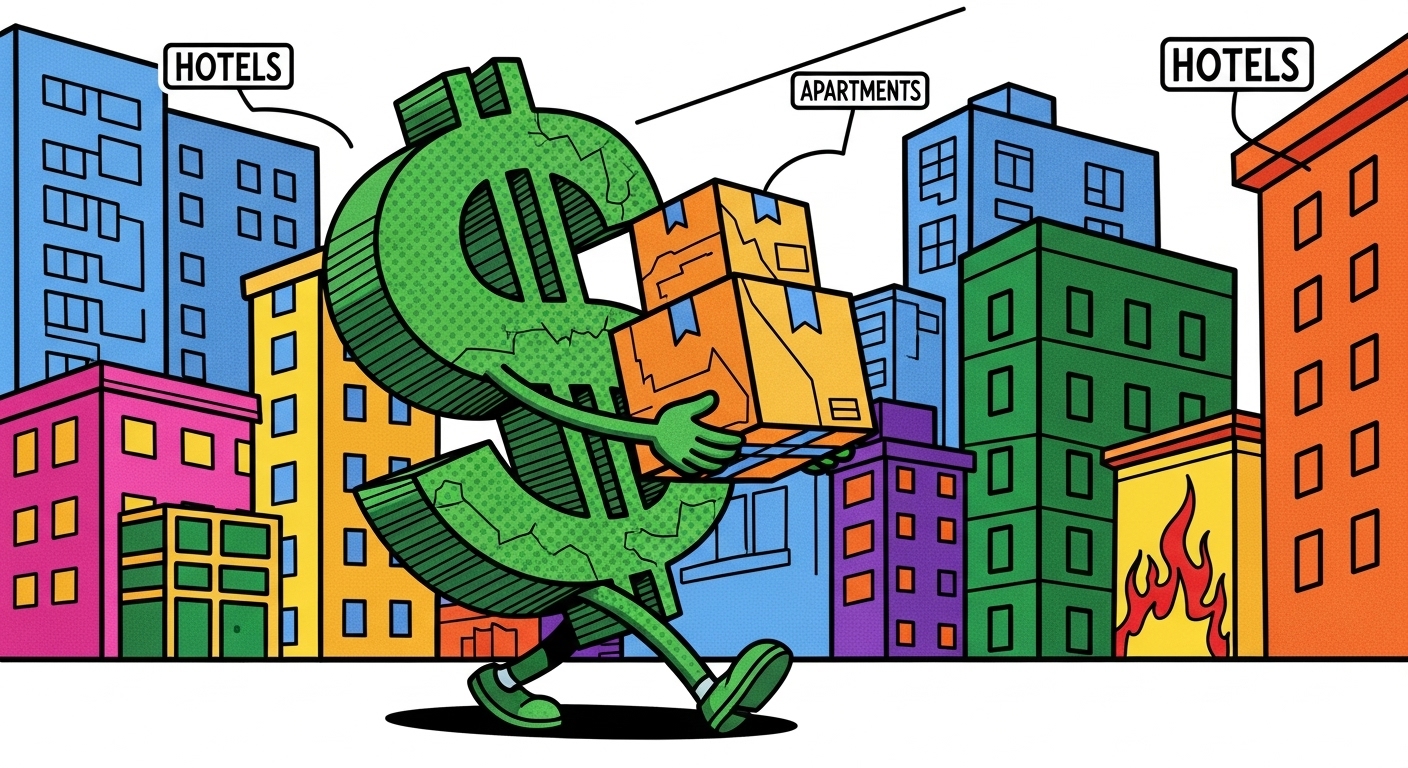The Big Apple’s Squeeze: Navigating Sky-High Hotel Rates and the Elusive Affordable Home
New York City, a global beacon of culture and commerce, is grappling with a crippling dual affordability crisis. For tourists, the dream of visiting is being crushed by record-high hotel prices. For New Yorkers, the dream of living here is fading as the search for a reasonably priced home becomes ever more desperate. These aren’t separate problems; they are two heads of the same monster, fed by a profound shortage of available rooms and homes.
Hotels: Why Your Next NYC Trip Might Break the Bank
If you’ve priced an NYC hotel recently, you’ve felt the squeeze. The average daily rate (ADR) has soared, with some analyses placing the 12-month average over $320. This isn’t just a post-pandemic tourism rebound; it’s a perfect storm of policy, economics, and logistics.
- The Short-Term Rental Shake-Up (Local Law 18): This pivotal law, implemented in the fall of 2023, was designed to return housing units to the long-term market. Its most immediate effect, however, was on tourist accommodations. By requiring hosts to register with the city, the law effectively eliminated over 90% of previously active short-term listings. With fewer Airbnb-style options, demand funneled directly to traditional hotels, giving them immense pricing power.
Figure 1: Change in Active Short-Term Rentals After Local Law 18
- Migrant Shelter Demands: The city is currently using a significant number of hotels to house asylum seekers. As of spring 2025, this accounted for roughly 14,000 rooms, or 11.5% of the city’s total inventory. While a necessary humanitarian effort, this removes a substantial portion of rooms from the commercial market, further tightening supply for tourists and business travelers.
Figure 2: Share of NYC Hotel Rooms Used for Migrant Shelters (April 2025)
- Soaring Operational Costs: Hotels are facing steep increases in the cost of doing business. According to industry reports for 2024, labor costs jumped 4.8%, while insurance premiums skyrocketed by 17.4%. Combined with rising property taxes, these expenses are inevitably passed on to guests in the form of higher room rates.
Figure 3: Year-Over-Year Cost Increases for NYC Hotels (2024)
- A Freeze on New Hotel Development: A 2021 citywide special permit requirement has made building new hotels exceptionally difficult. The complex approval process has stifled development, limiting the market’s ability to respond to surging demand with new supply and keeping prices for existing rooms high.
The Housing Crisis: An Apartment Becomes a Luxury
For New Yorkers, the struggle to find affordable housing is a daily reality. The city is simply not building enough homes to keep up with demand, a problem that has been decades in the making.
Unrelenting Demand vs. Stagnant Supply
The core of the crisis is a fundamental mismatch. Between 2011 and 2023, the city’s robust economy added approximately 895,000 jobs, yet only saw the creation of about 353,000 new housing units. More jobs mean more people needing a place to live, while a constrained housing supply forces them to compete for limited inventory.
Figure 4: NYC Job Growth vs. New Housing, 2011-2023
Why Aren’t We Building More?
Sky-High Building Costs:
Building in New York is uniquely expensive. The cost of land is astronomical, and as a Baruch College report highlights, construction material and labor costs have risen dramatically since 2020, putting immense financial pressure on any new development.
Figure 5: Estimated Construction Cost Increases, 2020-2024
The Regulatory Maze:
Beyond costs, developers navigate a complex web of regulations. Restrictive zoning has historically limited housing capacity, and the expiration of the crucial 421-a tax abatement program in 2022 removed a key incentive for building rental housing. Its successor, 485-x, comes with stricter affordability and labor requirements, and its long-term impact on large-scale development remains to be seen.
The Renter’s Reality
The result of this supply-and-demand crunch is a brutal rental market. Median rents in Manhattan consistently hover above $4,000 a month, with Brooklyn and Queens not far behind.
Figure 6: Median Monthly Rent by Borough
This is fueled by a critically low citywide rental vacancy rate, which has fallen to a mere 1.4%. In such a tight market, landlords hold nearly all the leverage, and tenants are left with few options but to pay up or move out.
Figure 7: NYC Rental Vacancy Rate, 2017-2024
Note: Data from the official NYC Housing and Vacancy Survey, conducted periodically.
A Tangled Web and the Path Forward
The hotel and housing crises are deeply intertwined. Policies aimed at one sector, like Local Law 18, inevitably impact the other. Both compete for the same limited land, labor, and construction resources.
Solving this requires a comprehensive, multi-pronged strategy. It means aggressively pursuing pro-housing zoning reforms like the “City of Yes” initiative, reforming the city’s outdated property tax system, and creating effective incentives that spur the construction of housing for all New Yorkers. The future of the city—for residents and visitors alike—depends on it.
